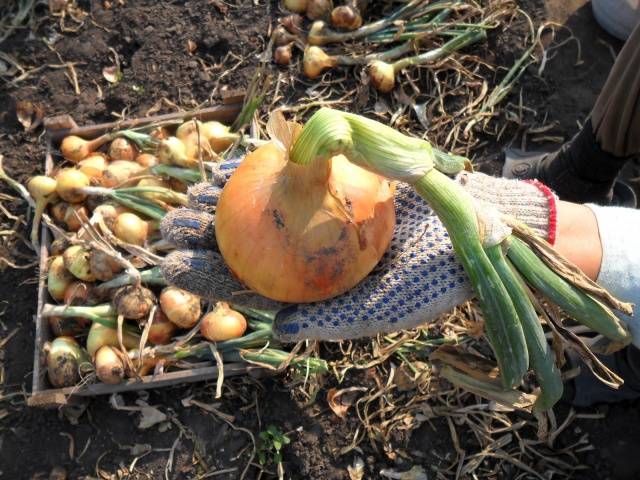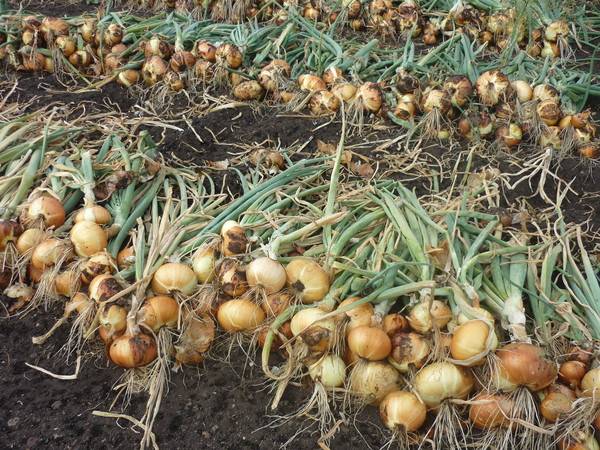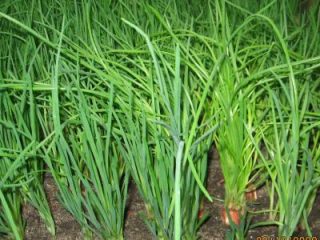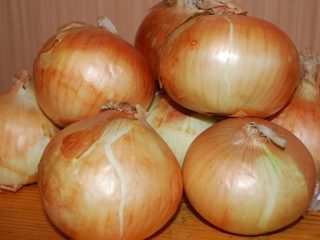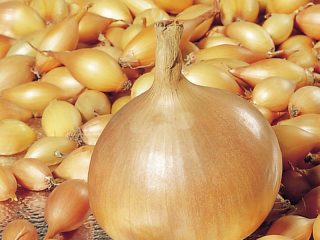Content
It would seem that harvesting onions is the simplest of all garden tasks, because the turnip needs to be pulled out of the ground and the feathers trimmed. But not everything is as easy as it seems at first glance. The most difficult thing is to determine the time to dig up the onions. If you start harvesting a little earlier or, conversely, miss the right moment, this will certainly affect the shelf life of the bulbs - the vegetable may not last until the next season.
When onions are harvested from the beds, how to preserve the onion harvest by digging it up at the appropriate time - the answers are in the article.
When to pick onions
The timing of harvesting a crop such as onions depends on several factors. In this case, you must take into account such things as:
- Vegetable variety. After all, onions are not only onions; in Russia they often grow leeks, shallots or heirloom varieties; we should also not forget about the sets from which the next harvest will grow.
- Rate of crop maturation. Regular varieties of onions ripen, on average, in 70-75 days.
- Weather conditions can also affect the speed of ripening, because in a cold summer, turnip onions will remain green longer, and intense heat, on the contrary, will quickly dry out the feathers, speeding up the harvest time.
- Soil moisture is of no small importance. Watering onion beds must be stopped 10-14 days before the expected harvest date.If the last month of summer is usually rainy in the region, the gardener should harvest the crops before the rainy season begins.
In general, it is very difficult to determine exactly when to remove onions from the garden for storage. Inspecting the bulb, tasting it, or any other methods will not help here. The main rule of the gardener, in the case of onions, is: “Feathers will tell you when to remove the onions from the garden.”
This means that the gardener should pay more attention to the above-ground part, and not examine the bulb itself. When harvesting time approaches, feathers manifest themselves this way:
- They begin to turn yellow and dry out.
- They lie down on the ground.
This means that as soon as the green part of the onions turns yellow and takes on a horizontal position instead of a vertical one, it’s time to pull the turnips out of the ground.
Optimal time to harvest onions
In different regions of the country, the moment when onion feathers turn yellow may occur at different times. Weather conditions also contribute to this - they can also affect the speed of bulb ripening.
In most regions, the time for harvesting onions coincides with the last days of July. As a rule, in August the rainy season begins, with cold nights, which leads to rotting of the bulbs and infection of plants with fungal diseases.
One thing can be said: if the weather is cool and cloudy, and the onion feathers are still green and are not going to fall, you can wait until the end of August. It’s just important not to miss when to remove the onions from the garden, and for this you will have to regularly inspect the plants and follow the forecasts of weather forecasters.
What to do if the onion does not turn yellow
Sometimes it happens that the gardener is already ready to harvest the onions, and the time seems to have come, but the feathers do not turn yellow or dry out; on the contrary, they stand in an even green formation. In this case, the turnips need a little help, because within the allotted time, the turnips should have been saturated with all the useful substances and “dressed” in a strong husk.
If your feathers don't dry out and autumn is just around the corner or rain is forecast, you can try the following:
- use a pitchfork to dig up the ground under the bulbs and lift the turnips a little;
- cut the roots of plants with a sharp shovel;
- rake the soil away from the bulbs, exposing the heads;
- undermine the onion with your hands, depriving the roots of contact with the nutrient medium.
In this case, it is important to understand that it is the roots that need to be trimmed; in no case should you tear off or mow the aboveground part of the plants. Wrong tactics will lead to infection of the bulbs, while deprivation of the roots of nutrition contributes to the drying out of the tops and the outflow of nutrients from the above-ground part of the plant to the underground.
It’s clear when you need to collect onions, now you need to decide how to do it correctly.
Rules for harvesting onions
Onions will be stored well only under the following conditions:
- if it is assembled correctly;
- if the turnips are healthy and well protected by the husk;
- if storage conditions are met.
It is necessary to remove onions by following these recommendations:
- Choose a dry, sunny day for cleaning. It's good if the weather is windy.
- Look at the weather reports for a couple of weeks ahead - there should be no rain.
- From light soils, the onion can be easily removed by hand; to do this, just pull the neck.In denser and more dry soils, the heads will have to be dug out with a shovel or pitchfork.
- You should not dig directly into the bed; you must step back at least 10 cm from the row with onions - this way the heads will not be damaged.
- The dug up onions can be left in the garden bed, folding their heads to one side if the weather promises to be dry and sunny. Otherwise, the crop should be taken under a canopy or spread out on the floor of the attic or barn.
- Turnips should be well ventilated, so it makes sense to create a draft in the storage and place the crop on a wire rack. The onion should be folded in no more than three layers.
- You can trim the feathers when the neck dries out. This will happen somewhere on the 10-12th day after harvesting from the beds.
- Trim the onion with sharp scissors, leaving 8-10 cm of the neck. The roots are also trimmed, leaving shoots of 1.5-2 cm. This way, the bulbs will be stored for as long as possible.
- The cut onions are dried a little more and sent for storage.
Dug out onions are usually stored in wooden boxes, boxes or baskets. It is very effective to weave braids from onions and hang them from the ceiling - in this case, the feathers are not cut so short, leaving at least 15 cm.
It can definitely be said that the bulbs need dry, cool air and a minimum of sunlight.
When to Harvest Other Varieties of Onions
All of the above applies to only one type of crop - onions. But gardeners also grow other varieties, the harvesting rules of which may differ.
For example, leeks should not dry out; on the contrary, this crop is harvested along with the green feathers, only slightly trimming their tops. Determining the appropriate time for harvesting is simple - you need to read the recommendations of the seed manufacturer and find out the duration of the growing season for a particular crop.
External signs of full maturity at the leek no, this variety can remain in the ground until the first frost begins. Even in this case, for the first time you can use a covering material and pick the required amount of vegetables if necessary.
Before storage, leeks are cleaned of damaged leaves and washed thoroughly, then stacked head to head and placed in a cool place (refrigerator) in a plastic bag.
Onion sets harvested in the same way as regular onions. The peculiarity lies only in the small size of the set and, accordingly, in its speedy ripening. When the feathers turn yellow and fall off, it’s time to pull out the sets. After this, the bulbs are ventilated, dried, the feathers are trimmed, leaving 2-3 cm, and sent for storage.
Family variety grows in nests, the bulbs are elongated and small in size. This variety also ripens a little earlier than the usual onion variety. Some gardeners store such onions in nests, others divide them into separate bulbs - practice has shown that this is not important.
There is nothing complicated in harvesting onions and storing them; the main thing is not to miss the right moment for harvesting and dry the heads thoroughly before storing them in storage.
If you harvest the onion too early, its scales will not harden and will not be able to protect the heads from cold and damage; later harvesting can lead to the bulbs rotting in the ground and becoming infected with infections.
